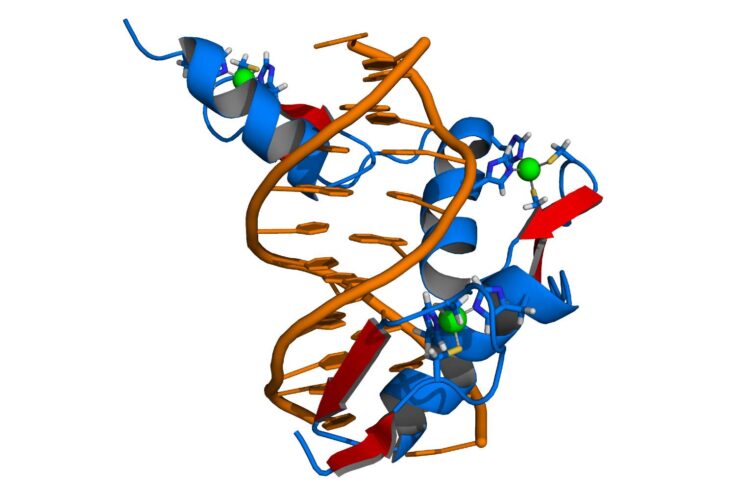Scientists in California are attempting to edit a gene inside the human body for the first time in order to cure a disease. In a ground-breaking clinical trial, researchers have treated a patient using gene editing tools, permanently changing the DNA to cure a severe inherited disease.
To accomplish this they’re using zinc finger proteins, which got their name because they grip DNA molecules like a ‘finger’ and have a zinc molecule within the protein fold.
Building on pioneering research by Sir Aaron Klug, zinc finger proteins have shown great potential to target genetic mutations in cells.
About the project
Zinc finger proteins were discovered in 1985 by Sir Aaron at the Medical Research Council (MRC) Laboratory of Molecular Biology, in studies aimed at shedding light on the fundamental processes of gene transcription and regulation.
In 1994 Sir Aaron and his team published details of a zinc finger protein that they had engineered to recognise a specific location within the DNA. This created interest in the potential of zinc finger proteins as an entirely new tool for manipulating genes inside an organism.
In 1996, a team at Johns Hopkins University fused a zinc-finger protein and an enzyme that snips DNA called a nuclease. This created prototype ‘molecular scissors’ that in theory could target a unique site in the genome and cut it to induce a repair. Zinc finger nucleases allow scientists to snip the DNA double helix in a precise location within the three billion bases, or letters, that are packed into each human cell.
Several biotech companies were set up to exploit the technology in model organisms, crop plants and human cells. This included Sangamo Therapeutics in 1995 and the MRC LMB spinout Gendaq Ltd in 1999, which was later acquired by Sangamo Therapeutics.
Impacts of the project
In a ground-breaking clinical trial sponsored by Sangamo Therapeutics, researchers in California carried out gene editing inside a patient’s body to treat a severe inherited disease. The patient, who has Hunter syndrome, was treated in November 2017 with a specifically engineered zinc finger nuclease to insert a replacement copy of the defective gene in his liver.
Sangamo Therapeutics has fine-tuned zinc finger nucleases as a platform for gene therapy and genome editing, resulting in promising research programmes for treating HIV, haemophilia B and other genetic diseases.
A valuable body of safety data has been built up by research on zinc finger nucleases spanning decades, including pilot human studies with over 100 subjects. This safety data provides a vital resource for further research and development of effective treatments using gene editing.
Find out more
Read about the original zinc finger protein research in the journal article Repetitive zinc-binding domains in the protein transcription factor IIIA from Xenopus oocytes (EMBO Journal).
Top image: Graphic representation of the protein Zif268 (blue) containing three zinc fingers in complex with DNA (orange). Credit: Thomas Splettstoesser.

